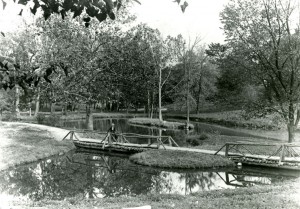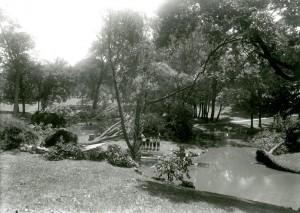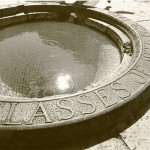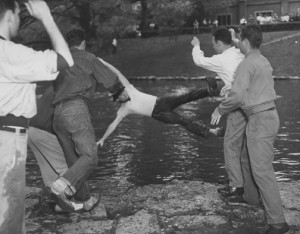Cities with rivers flowing through them have always been subject to flooding, and with two rivers that meet downtown – the Olentangy and Scioto – Columbus is no exception. The year 1913 sticks out in particular, however, for the amount of destruction and loss of life caused by such a weather event. Statewide, the flood killed nearly 500 people and destroyed or damaged 40,000 homes. It is why it is still considered Ohio’s most significant weather disaster.
In Columbus, flood-warning bells began ringing on March 24, which was Easter Sunday. River waters had started rising the day before and did not start receding until March 27. All totaled, 88 Columbus residents died, and thousands were rendered homeless. Damage was extensive, with only one bridge (Rich Street) linking Columbus’ West Side to the rest of the city.
Campus came through relatively unscathed: The water reached the foundations of a few agriculture buildings at the corner of Neil and Woodruff Avenues, but all of the livestock survived, and overall damages were estimated at less than $10,000. The week after the flood, the University closed only that Wednesday – because of a lack of city water – but classes did not resume normally for at least another week after that because of ongoing relief efforts.
University President William Oxley Thompson first offered the service of the University students in the military science program, who would work under the supervision of University Commandant George L. Converse. The student cadets worked 24-hour shifts to evacuate families from their flooded homes, mostly on the West Side. In addition, University female staff members and students worked to prepare meals, gather and distribute clothing and necessities, and help organize relief efforts. Instead of holding classes, some professors took students to help with relief efforts
Indeed, President Thompson encouraged them by organizing two days devoted to volunteer work, saying that such circumstances only come about once in a generation, and that teaching civic responsibility was certainly one of the finer points of higher education. Students continued to volunteer after the floods had receded and the clean-up had begun.
Later, student arts groups, such as Strollers, organized performances to help raise money for those affected. Meanwhile, the College of Engineering faculty and students began making plans to aid in repairing the levee and rerouting the Scioto River. Faculty in the Department of Forestry also lobbied the state legislature to encourage forest conservation and reforestation to prevent future flooding.
Filed by C.N.












Recent Comments